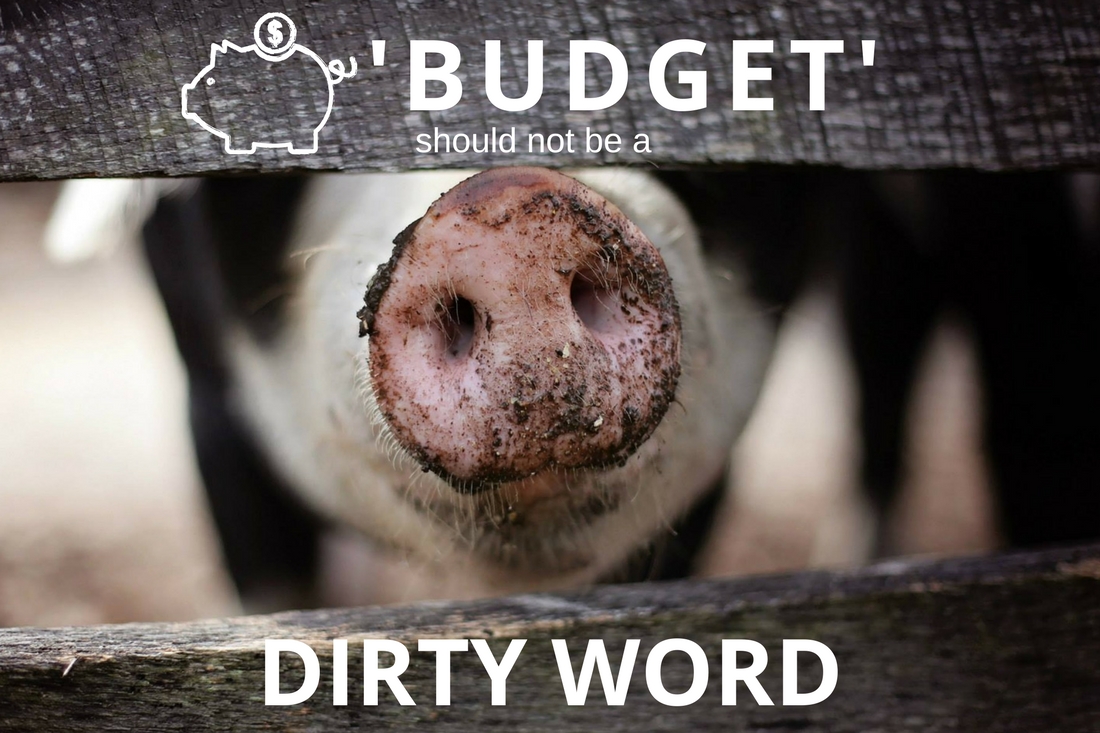![Finance & the single woman: what you need to know]()
29 Mar 2019 | Family & Friends, Personal Finance

Finance & the single woman: what you need to know
You may be divorced, recently separated or merrily single. Either way, as a single woman you face particular financial challenges. It’s important to know about them and plan for them.
Gone are the days when depending on Mr. Right was the only way to secure a comfortable future as a woman.
And frankly, good riddance!
Women are now better educated and better supported to place themselves in the driver’s seat when it comes to their finances.
But challenges still remain.
Below we’ll cover what you, as a single woman, can do to beat the stats and proactively plan for your future.
1. Know what you’re up against
Forewarned is forearmed. It pays to know what kind of uphill battle you’re facing so you can best tackle that mountain.
Despite living an average of five years longer, women retire with an average super balance of $230,907, while men retire with about twice that amount.
The three main reasons for this imbalance are the gender pay gap, time spent out of the workforce to raise children, and all the challenges that come with running a single-parent household.
2. Know your worth
The gender pay gap is real. And it’s big. In fact, men working full-time earn nearly $27,000 a year more than women working full-time.
It sounds awfully simply, but there’s no better way to start closing that gap than by asking for a pay rise.
That’s because research suggests women are less likely to ask in the first place.
A recent survey of 4,600 Australian employees showed that 48% of men thought salary was negotiable at their workplaces, while only 33% women felt that way.
And while it might feel less confronting to simply jump ship to another company that will appreciate you more, it’s always worth trying option A first.
Just make sure you: make the request official, time it well, know what you want, and be ready to state your value.
3. Become a super woman
Many women make the mistake of ignoring their superannuation until it’s too late.
This has led to one in three Australian women having to rely on the pension when they finish working.
To avoid this, you need to take proactive steps to control your super.
You can do this by consolidating your super, regularly checking your balance, increasing your contributions, and doing your homework to ensure your super fund is providing you with healthy returns.
4. Consider your risk appetite
A NAB survey recently found that women across the country are “missing out on tens of thousands of dollars in savings during their lifetime because of their tendency to shy away from taking appropriate levels of risk in their portfolio”.
The research showed that across all age groups, the percentage of women with a high risk allocation was just 30%, which is 7.5% lower than men.
“This lower preference for risk could negatively impact women’s savings balances over multiple decades,” said NAB Asset Management Portfolio Specialist, Kajanga Kulatunga.
Not only that, but the research also showed that female investors change their asset allocation 20% less frequently than men.
The answer isn’t making investments you’re uncomfortable with. Instead, we can help you identify your goals, calculate your financial capacity to bear risk, and get familiar and comfortable with the best investment strategy to achieve your aspirations.
5. Create a budget and track spending
Few people relish the idea of tracking their expenses, but it is one of the best ways to manage your money.
You’ll be surprised at how quickly your daily spending – whether it be takeaway coffee, drinks with the girls, or ordering lunch – can add up over the weeks and months.
The good news is that setting up a budget is easy. We have a handy budget planner for all kinds of personal budgets – just put in your income and expenses, and the planner will calculate how much you have left to put towards your savings.
If you want something a little more in-depth, come in for a chat and we’ll be happy to help you out.
6. Time to act
There are some great resources online specifically designed to help women meet their financial goals and avoid common pitfalls.
ASIC’s Women’s Money Toolkit has a fantastic range of topics, guidelines and tools, including information specifically targeting women for under 25, and for women looking after a family.
Still not sure?
Then come and talk to us. We understand the needs and risks facing women, and can help plan a future for you that’s both satisfying and secure.
![Finance & the single woman: what you need to know]()
22 Mar 2019 | Personal Finance

Is your coffee habit adding years to your mortgage pain?
It’s smooth, it’s delectable, and it might just be adding years to your mortgage pain. The culprit? Your daily cup of joe.
A morning coffee has long been a ritual for many Australians – a ritual that used to take place over breakfast in the comfort of our own homes.
But with the rapid pace of modern life, and the plethora of hip coffee options available around our workplaces, more and more Australians have succumbed to the lure of the take-away coffee.
This might seem innocent enough, but those coffees really add up.
By finding an alternative, you could shave years off your mortgage and save thousands in interest repayments. Don’t believe us? Read on.
But I love my coffee! What are my options?
We’ve had a look at the relative cost of different coffee options, both on a monthly basis and over the course of five years. The results may surprise you.
Option 1: Takeaway coffee
Regardless of whether you’re getting a long black, latte or cappuccino, chances are you’re spending at least $4 a day, not to mention contributing to landfill with all the paper cups.
Upfront cost: Nil
Price of coffee: $28/week = $121/month
Cost over five years: $7,280
Option 2: French Press or a Moka Pot
These days the coffee you drink is as much an expression of your personality as it is about the taste.
So why not switch to a chic little French press or an Italiano moka pot?
For under $100 you can get a classy little table piece that will deliver a perfect cuppa time and time again.
Upfront cost: $60
Price of beans: $5/week = $22/month
Cost over five years: $1,380
Option 3: Capsule coffee machine
Oh the joy of a capsule espresso. Just as smooth as your local café, at a fraction of the cost.
The bonus is these days capsule machines also come with high quality milk attachments – perfect for those who prefer their coffee with slightly less bite. However for the environmentally conscious, this probably isn’t the best alternative.
Upfront cost: $500
Price of capsules: $5/week = $22/month
Cost over five years: $1,820
Option 4: Instant coffee
The stalwart of workplace kitchens across Australia, a cup of powdered Nescafe might not be everyone’s idea of a sophisticated beverage, but when the mid-afternoon slump hits it can really do the trick.
We are talking about budgeting here after all, and there is definitely no cheaper way to get your caffeine fix.
Upfront cost: Nil
Price of powdered coffee: $1/week = $4.30/month (or free if you can find it in your workplace)
Cost over five years: $260
What is the impact?
Ok, so now we have the basic costings, let’s see what these options really mean for your mortgage.
According to the 2016 Census, a typical Australian is in their late 30s, married with two children, and paying off a mortgage with their spouse.
Let’s assume this couple lives in the city, where the average new household loan is $374,900 and monthly repayments are $2,586/month, at an interest rate of 4%.
Let’s also assume they are also both drinking a cup of takeaway coffee per day, so spending $242/month on caffeine.
At this current rate, they will pay off their loan in 16 years and 8 months at a total cost of $516,044.
How much could they save if they switched from takeaway to another option?
French Press/Moka Pot
A saving of $198/month means the couple could increase their repayments to $2784/month.
This means they could pay their loan off in 15 years, at a total cost of $501,078. That’s a saving of 1 year 8 months, and $14,906 (deducting the cost of the coffee pot).
Capsule coffee
Like the French Press, a couple could save $198/month, meaning the couple could increase their repayments to $2784/month.
This means they could pay their loan off in 15 years, at a total cost of $501,078. That’s a saving of 1 year 8 months, and $14,466 (deducting the cost of the machine).
Instant coffee
A saving of $233.4/month means the couple could increase their repayments to $2819.4/month.
This means they could pay their loan off in 14 years 9 months, at a total cost of $498,764. That’s a saving of 1 year 11 months, and $17,280.
That’s just a drop in the cup
Of course coffee is just the tip of the iceberg. There are many other techniques you can employ to help pay off your mortgage much faster.
So give us a call on 07 3911 1190 and we’ll help you come up with a plan that will aim to shave a couple more years off your mortgage and help reduce that mortgage pain.
![Finance & the single woman: what you need to know]()
15 Mar 2019 | Personal Finance

‘Budgeting’ shouldn’t be a dirty word. Here’s why you need one
While budgeting isn’t exactly pig-in-the-mud kind of fun, following a few simple steps can have you laughing all the way to the bank.
We’ve all been there – it’s the end of the month and you realise there’s barely enough in the bank for groceries, let alone savings.
We know we should avoid this by setting up a budget. But we also know that’s about as exciting as cleaning the bathroom floor.
However, creating short, medium and long-term goals can help you to stay focused, while getting rewards on a regular basis.
The best part? Reaching your financial PBs releases dopamine, the ‘feel good’ hormone which reinforces positive behaviour. So, basically you can get ‘buzzed’ on your budget.
Here’s how to create a budget in four simple steps:
Step 1: Calculate your income
This is the easiest step. Have a look at your payslips or your bank statements to see how much is going into your account on an average month. Make sure you include any rent you might be earning, or interest on savings. Also ensure you don’t include the income that never makes it to your bank account, like PAYG and super.
Step 2: Work out your expenses
This is slightly more complicated, as expenses change month to month. To work this out, check your bank statements, bills and receipts to see how much you’re spending on things like rent, groceries, transport, medical expenses, utilities and clothing. Remember to include payments you only make once or twice a year, like car registration or insurance.
Step 3: Set up your budget
Put away that calculator – once you know your income and expenses the next part is simple. Just hop online and find a free budget planner which can do the calculations for you.
We have a handy budget planner on our website for you to use. Just put in your income and expenses, and the budget planner will work out how much you have left over to put towards your savings.
Step 4: Reap the rewards
By setting achievable short, medium and long-term goals, then using a budget to help reach them, you’ll be on a pathway to achieving financial success.
Still stuck?
Budgeting might be satisfying, but that doesn’t mean it’s always easy. After all, everyone has their own unique situation and yours might require extra help.
If you feel as though you need assistance in setting up a budget, come in and have a chat and we’ll help create a budget that suits your specific needs and lifestyle.
https://finance-matters.info/2017/09/25/budget-shouldnt-dirty-word-heres-need-one/
![Finance & the single woman: what you need to know]()
1 Mar 2019 | Personal Finance

Under the microscope: your micro-transactions
When it comes to paying off your mortgage, many of us are in the dark as to where we should be making significant savings. A good place to start? Cutting down on ‘micro-transactions’.
The lure of micro-transactions – purchases that are low in cost and trivial in nature – can be a real obstacle for those trying to pay off their mortgage faster.
Indeed, while the cost of these transactions may seem infinitesimal in the grand scheme of things, they can add up to the equivalent price of that trip you always wanted to take, or the sophisticated new piece of technology you’re desperate to try.
Of course, there are a myriad of ways to pay of a mortgage sooner, including refinancing or downsizing.
For many of us, however, addressing our penchant for micro-transactions is surprisingly effective. Here are a few examples.
Takeaway coffee and bottled water
Picking up a hot cup of takeaway coffee in the morning is an irresistible slice of luxury for many of today’s busy workers.
However, while a cup only costs a few dollars, transactions can easily add up for caffeine addicts.
One $4 cup of coffee costs you $28 per week. Over one month that’s almost $120. Over a year it’s almost $1500.
Consider switching to home-brewed coffee in a flask. As well as saving you a lot of money, you’ll be saving the environment by avoiding disposable cups. The same can be said for bottled water.
The gym
Having a gym membership can make you feel virtuous and healthy, but how often do you actually make use of it?
If the answer is “not as much as I should” then you need to reconsider your membership.
The daily cost of a gym membership is about the same as a cup of coffee. That’s another $1500 each year right there.
The great thing about exercise is that it can be done for free – throw on some jogging shoes and think about all the cash you’re saving!
Household bills
There are plenty of possible ways you could be overpaying on household bills.
Many people still pay for a landline, for example, but the rise of the mobile has made domestic phones almost redundant.
And do you really need high speed NBN? Most of the Telcos are offering BYO mobile phone plans with endless data for about $60-$70 a month – with unlimited calls and texts.
Once you go past a 40GB cap your internet speed is reduced to 1.5Mbps – which is still fast enough to stream Netflix in standard definition, browse the web, and listen to music.
The best bit? Your smartphone can double as a hotspot modem to your other devices.
Other common ways of overspending on household bills include leaving electrical items on standby, using inefficient light bulbs or running the air conditioner 24/7.
Dig a little deeper into where your money is going on household bills and you could save a significant sum – enough to reduce your mortgage significantly each year.
Get in touch
If you’d like to find out other ways you can save on your mortgage – get in touch – we’d love to help out.




